Microbiology With Diseases By Taxonomy (6th Edition)
6th Edition
ISBN: 9780134832302
Author: Robert W. Bauman Ph.D.
Publisher: PEARSON
expand_more
expand_more
format_list_bulleted
Concept explainers
Question
Chapter 21, Problem 1VI
Summary Introduction
To fill:
The elementary body, endocytosis, vesicle, host cell, inclusion body, reticulate body in stages and structure of chlamydia life cycle and also indicate how many hours have typically transpired since infection.
Introduction:
Chlamydia belongs to Gram negative, non spore forming bacteria. They are small obligate parasitic bacteria that live inside the endosome of host cell. Thus, both Rickettsia and Chlamydia are the smallest cellular microbes.
Expert Solution & Answer
Want to see the full answer?
Check out a sample textbook solution
Students have asked these similar questions
help tutor please
Q8. A researcher wants to study the effectiveness of a pill intended to reduce stomach heartburn in pregnant
women. The researcher chooses randomly 400 women to participate in this experiment for 9 months of their
pregnancy period. They all need to have the same diet. The researcher designs two groups of 200 participants:
One group take the real medication intended to reduce heartburn, while the other group take placebo
medication. In this study what are:
Independent variable:
Dependent variable:
Control variable:
Experimental group: "
Control group:
If the participants do not know who is consuming the real pills and who is consuming the sugar pills.
This study is
It happens that 40% of the participants do not find the treatment helpful and drop out after 6 months.
The researcher throws out the data from subjects that drop out. What type of bias is there in this study?
If the company who makes the medication funds this research, what type of bias might exist in this
research work?
How do I determine the inhertiance pattern from the pedigree diagram?
Chapter 21 Solutions
Microbiology With Diseases By Taxonomy (6th Edition)
Ch. 21 - Why do most cases of rickettsial diseases occur...Ch. 21 - Prob. 2TMWCh. 21 - Prob. 3TMWCh. 21 - Why is a cholera pandemic unlikely to become...Ch. 21 - Two patientsa woman and her husband, ages 23 and...Ch. 21 - Most human infections caused by species of...Ch. 21 - Prob. 2MCCh. 21 - Prob. 3MCCh. 21 - Prob. 4MCCh. 21 - The most commonly reported sexually transmitted...
Ch. 21 - Prob. 6MCCh. 21 - Prob. 7MCCh. 21 - Prob. 8MCCh. 21 - Prob. 9MCCh. 21 - Prob. 10MCCh. 21 - Two weeks after a backpacking trip in Tennessee, a...Ch. 21 - Prob. 12MCCh. 21 - Prob. 13MCCh. 21 - Prob. 1VICh. 21 - Prob. 2VICh. 21 - Prob. 1SACh. 21 - Describe the three developmental stages of the...Ch. 21 - Prob. 3SACh. 21 - Prob. 4SACh. 21 - Prob. 5SACh. 21 - Beginning with the ingestion of water contaminated...Ch. 21 - Prob. 1MCh. 21 - Prob. 2MCh. 21 - Prob. 3MCh. 21 - Prob. 4MCh. 21 - Prob. 1CTCh. 21 - Prob. 2CTCh. 21 - Prob. 3CTCh. 21 - Prob. 4CTCh. 21 - Thirty-nine members of an extended family sought...
Knowledge Booster
Learn more about
Need a deep-dive on the concept behind this application? Look no further. Learn more about this topic, biology and related others by exploring similar questions and additional content below.Similar questions
- 22. Which of the following mutant proteins is expected to have a dominant negative effect when over- expressed in normal cells? a. mutant PI3-kinase that lacks the SH2 domain but retains the kinase function b. mutant Grb2 protein that cannot bind to RTK c. mutant RTK that lacks the extracellular domain d. mutant PDK that has the PH domain but lost the kinase function e. all of the abovearrow_forwardWhat is the label ?arrow_forwardCan you described the image? Can you explain the question as well their answer and how to get to an answer to an problem like this?arrow_forward
- Describe the principle of homeostasis.arrow_forwardExplain how the hormones of the glands listed below travel around the body to target organs and tissues : Pituitary gland Hypothalamus Thyroid Parathyroid Adrenal Pineal Pancreas(islets of langerhans) Gonads (testes and ovaries) Placentaarrow_forwardWhat are the functions of the hormones produced in the glands listed below: Pituitary gland Hypothalamus Thyroid Parathyroid Adrenal Pineal Pancreas(islets of langerhans) Gonads (testes and ovaries) Placentaarrow_forward
arrow_back_ios
SEE MORE QUESTIONS
arrow_forward_ios
Recommended textbooks for you
 Comprehensive Medical Assisting: Administrative a...NursingISBN:9781305964792Author:Wilburta Q. Lindh, Carol D. Tamparo, Barbara M. Dahl, Julie Morris, Cindy CorreaPublisher:Cengage Learning
Comprehensive Medical Assisting: Administrative a...NursingISBN:9781305964792Author:Wilburta Q. Lindh, Carol D. Tamparo, Barbara M. Dahl, Julie Morris, Cindy CorreaPublisher:Cengage Learning Medical Terminology for Health Professions, Spira...Health & NutritionISBN:9781305634350Author:Ann Ehrlich, Carol L. Schroeder, Laura Ehrlich, Katrina A. SchroederPublisher:Cengage Learning
Medical Terminology for Health Professions, Spira...Health & NutritionISBN:9781305634350Author:Ann Ehrlich, Carol L. Schroeder, Laura Ehrlich, Katrina A. SchroederPublisher:Cengage Learning

Comprehensive Medical Assisting: Administrative a...
Nursing
ISBN:9781305964792
Author:Wilburta Q. Lindh, Carol D. Tamparo, Barbara M. Dahl, Julie Morris, Cindy Correa
Publisher:Cengage Learning




Medical Terminology for Health Professions, Spira...
Health & Nutrition
ISBN:9781305634350
Author:Ann Ehrlich, Carol L. Schroeder, Laura Ehrlich, Katrina A. Schroeder
Publisher:Cengage Learning
